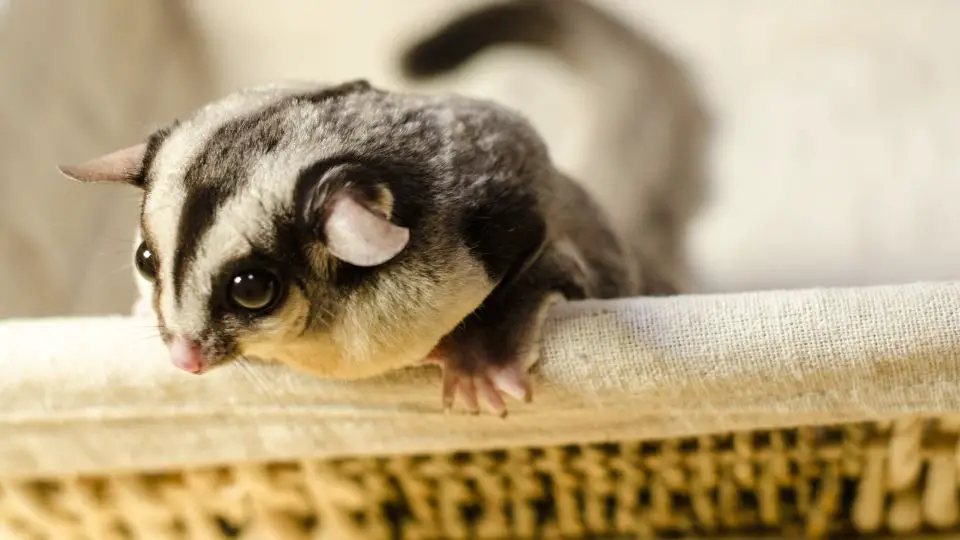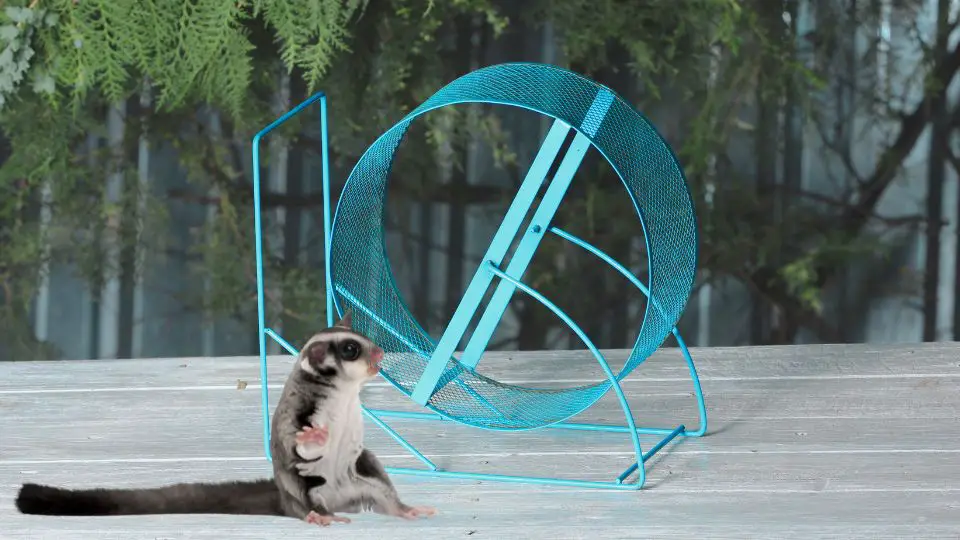A common problem with sugar gliders is paralysis, hind-leg paralysis to be more specific.
Hind-leg paralysis is a condition where the hind legs become partially or completely paralyzed. The exact cause of this problem is usually a bacteria or virus, but sometimes it can be a result of an injury.
The good news is that sugar gliders are very resilient creatures and often recover from hind-leg paralysis within a few weeks. However, it is still important to take your sugar glider to the vet as soon as possible so that they can rule out any other potential problems and also give your sugar glider the best possible chance for a full recovery.
In this article, we talk about some reasons why your sugar glider may be paralyzed, what are the signs of hind-leg paralysis and what to do about it.
Why is my sugar glider paralyzed?
There are many potential causes of paralysis in sugar gliders, ranging from trauma to infection.
If your sugar glider has suddenly become paralyzed, it is important to seek veterinary care immediately.
Some causes of paralysis, such as trauma, may be treatable, while others, such as infection, may be more serious. One of the most common problem with sugar gliders is hind-leg paralysis. This is a kind of nerve compression that affects the sugar glider’s ability to move its hind legs. There are many potential causes of this condition, including:
Bacteria
Bacterial infections the most common cause of hind-leg paralysis in sugar gliders. These infections can be treated with antibiotics, but it is important to catch them early.
If your sugar glider went outside, or was in contact with other animals, there is a risk of contracting a bacterial infection.
Viruses
Viral infections can also cause hind-leg paralysis in sugar gliders. Some common viruses that can lead to this condition include:
- Parvovirus: This virus is highly contagious and can be deadly. As this virus can progress quickly, it’s important to act quickly.
- Rabies: Rabies is another potentially deadly virus that can cause paralysis. Any sugar glider that is exposed to a wild animal should be seen by a veterinarian immediately, as rabies can be transmitted through a bite.
Lack of calcium in the diet
A diet lacking in calcium can lead to hind-leg paralysis in sugar gliders. Make sure your sugar glider has access to a calcium supplement, and that its diet includes foods high in calcium, such as dark leafy greens.
Make sure that your sugar glider doesn’t choose what it eats, since their diet can be ruined if it is not balanced.
A balanced diet must have a calcium to phosphorus ratio of 2:1. If you are not sure how to properly care for your sugar glider, talk to a veterinarian or exotic animal specialist.
Injuries
Any kind of injury to the spine or nervous system can cause paralysis. If your sugar glider has been in a fight or has had any kind of accident, it may be at risk for paralysis.
Treating hind-leg paralysis
The treatment for hind-leg paralysis will depend on the underlying cause. If the paralysis is caused by an infection, antibiotics will be prescribed. If the paralysis is caused by a lack of calcium in the diet, calcium supplements will be recommended. If the paralysis is caused by an injury, treatment will focus on relieving any pressure on the spine or nervous system.
In some cases, the paralysis may be permanent. However, with proper care and treatment, most sugar gliders can live a long and happy life.
Gliders that have been diagnosed with Hind-leg paralysis should are treated with an oral calcium supplement, such as Neocalglucon. If no infection can be found, a broad-spectrum antibiotic should still be prescribed as a prophylactic for a course of 7-10 days. Follow up x-rays should be performed 2-3 months after the beginning of treatment.
If your sugar glider is suddenly paralyzed, it is important to seek veterinary care immediately.
Prevention
The best way to prevent hind-leg paralysis is to make sure your sugar glider has a balanced diet and access to a calcium supplement.
Although calcium is important in your little pet’s diet, don’t go in the other extreme and give him/ her too much calcium. Too much calcium can be just as harmful as not enough.
It’s very important to take your glider to the veterinarian for regular check-ups, so he can have a medical history and be sure your glider is healthy and up-to-date on vaccinations. This will help to catch any potential problems early, before they become serious. And even if something happens and your glider becomes paralyzed, with early treatment, he has a good chance of making a full recovery.
Signs of hind-leg paralysis
The most obvious sign of hind-leg paralysis is the inability to use the back legs. The sugar glider may drag them when it moves, or it may not be able to move them at all.
There may also be weakness in the back legs, or they may appear limp. In some cases, the paralysis may only affect one hind leg. In other cases, it may affect both hind legs. If the paralysis is severe, the sugar glider may also have difficulty moving its tail. Paralysis can also cause incontinence, so the sugar glider may urinate or defecate on itself.
Other signs of hind-leg paralysis include:
- Overall weakness;
- Shacking;
- Shivering;
- Lethargy;
- Limpness in the back legs;
- Dragging the back legs when moving;
- Difficulty moving the tail;
- Unable to maintain balance.
Conclusion
Hind-leg paralysis is a serious condition that can be caused by several different things. The most important thing you can do to prevent it is to make sure your sugar glider has a balanced diet and access to a calcium supplement.
If your sugar glider does become paralyzed, it is important to seek veterinary care immediately. With early treatment, most sugar gliders can make a full recovery.







